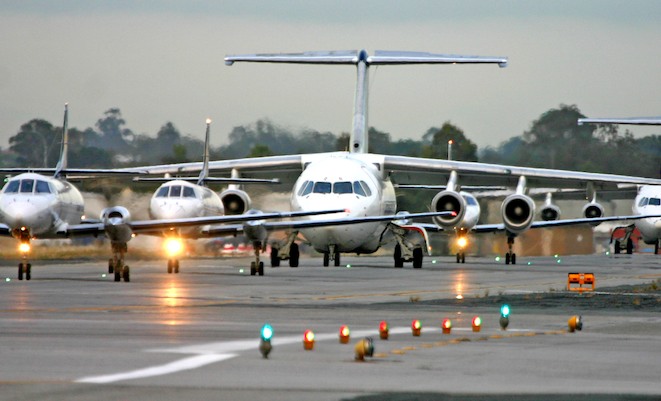
Australia’s charter operators carried about 220,000 fewer passengers in calendar 2016 amid the decline in resources-related activity, new figures show.
The annual domestic aviation activity report from the Bureau of Infrastructure, Transport and Regional Economics (BITRE) showed there were 2.41 million domestic charter passengers on fixed-wing aircraft in calendar 2016, down 8.1 per cent from 2.63 million in the prior corresponding period.
Meanwhile, there was an even steeper reduction in the number of charter aircraft trips in 2016, which fell 12.6 per cent to 44,812, from 51,247 previously.
It was the second straight year of weakening charter activity, following a 1.3 per cent drop in passenger numbers and 6.9 per cent reduction in trips in calendar 2015.
Australia’s major domestic carriers have all been affected by the end of the so-called mining boom, which had resulted in reduced demand for FIFO workers and left excess charter capacity in the market.
Lower commodities prices has also prompted corporate clients to seek better deals amid a more competitive charter market.
Indeed, Virgin Australia and Alliance Aviation Services noted in their application to Australia’s competition regulator for a proposed charter alliance the mining industry as a whole had been in decline since mid-2013.
“As there are very few new resources projects coming online, reductions in the size of FIFO workforces and the closure of mines, demand for FIFO air services has waned over the past few years and there is substantial excess capacity to support FIFO services,” the pair said in its submission to the Australian Competition and Consumer Commission.
“In addition to the downturn resulting in decreased demand for FIFO services, resource companies are also exerting pressure on FIFO operators to deliver enhanced value through reduced prices.”
The ACCC was currently considering the application, having issued a draft determination that rejected the proposed tie-up as it would reduce the number of players in the market. The two parties have submitted additional information in an effort to convince the regulator of the benefits of their proposed alliance.
Meanwhile, Qantas said in its 2016/17 first half results presentation it had cut capacity to resources-related markets by 13 per cent and was using smaller aircraft on those routes.
Further, the company reported a $50 million fall in revenue from resources markets in the 2016/17 first half, with revenue expected to decline $30 million in the current half, compared with the prior corresponding period.
Qantas said the outlook was for revenue declines to moderate in 2017/18 and be stable by 2018/19, with Queensland expected to slightly lag Western Australia in resources market stabilisation.
The BITRE report also showed significant falls in passenger numbers at a number of regional airports in Queensland and WA in calendar 2016.
The largest decline came at Roma, which experienced a 41.1 per cent drop in passengers to 87,800 during the year. Meanwhile, Gladstone tumbled 19.1 per cent to 331,700 and Moranbah slumped 15.2 per cent to 117,700.
In WA, Karratha suffered an 18.5 per cent drop in passengers to 494,900, and Port Hedland had 14.9 per cent fewer travellers through its terminal in calendar 2016 at 356,400.
On a more positive note, the privately-owned Brisbane West Wellcamp Airport had a 71.7 per cent increase in passengers to 120,700. It was the 35th busiest regional airport in the country in 2016, based on passenger movements.










